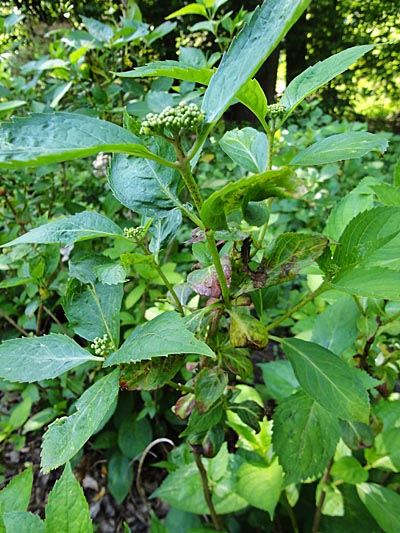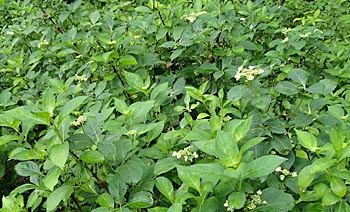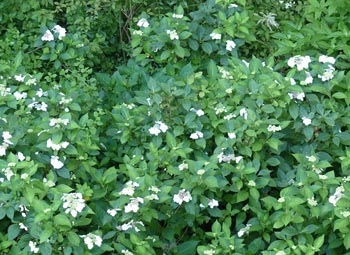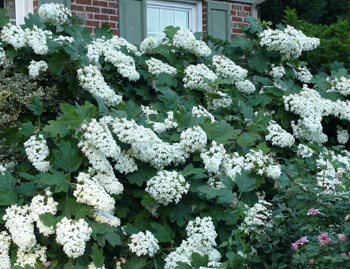Frost Damaged Hydrangeas — Part Two
By Elaine Homstad, Fairfax Master Gardener
“A garden is a grand teacher. It teaches patience and careful watchfulness; it teaches industry and thrift; above all it teaches entire trust.”
This very appropriate quote is from Gertrude Jekyll, British horticulturist, garden designer, author and artist of the late 19th and early 20th century.
Back in April, we had a surprising, and damaging, late frost, which affected the hydrangeas that had already begun to leaf out and display both new and old flower buds. I wrote an article for the May Fairfax Gardeners website, “Effects and Remedies for Frost Damaged Hydrangeas”, in which I advised “patience and careful watchfulness” and prudent pruning. I also finished with the statement, “Hopefully, the frost that caused the damage, while unusual, may not deprive us of all blooms this year. However, depending on your situation, you should probably expect a decreased output.”

Mid May – H. macrophylla ‘Bailmer’ with many buds, despite damage still apparent
I followed my own advice and resisted pruning, except for the most severely damaged parts. For most of April and the beginning of May, though there was new foliage growth, I saw little evidence of flower buds, and the plants still looked rather ragged, with their browned and shriveled leaves among the new growth.
However, in mid-May, I saw more signs of hope for blooms. Buds, and some blooms, began to appear atop the new and the re-growing stems and foliage.
In very early June, I left for a trip, and took this photo, encouraged by what I saw and continuing to hope for a decent recovery.
| When I returned several weeks later, and had the chance to examine my gardens (where the weeds had certainly not taken a vacation), I was more than just a little pleased to be met with this beautiful sight.
Recall that some hydrangeas bloom on old wood, that is, last year’s growth. Some bloom on new wood, this year’s growth. And some bloom on both old and new wood. My ‘Tokyo Delight’ variety, in contrast to my ‘Bailmer,’ is a strictly “old wood” variety, and for the past three years has suffered much more at the icy fingers of Old Man Winter. However, while not quite as floriferous as it has been in its heyday, it has recovered well from that April anomaly and is presenting its best bloom in four years, with enough buds present to expect a fuller display over the coming weeks. I have observed, and heard anecdotal evidence, that other gardeners are seeing strong bloom production on their hydrangeas, at least for those who were patient with their pruners. And with an average high temperature of 66 degrees and 18 days of rain in May, their recovery was given a much needed boost. The one hydrangea that is a consistently reliable bloomer, despite what Mother Nature tosses its way, is H. quercifolia ‘Alice’ and she has not disappointed me so far, so I will share a photo of her and finish with another quote from the great Ms. Jekyll. “The love of gardening is a seed once sown that never dies.” |
 Mid May – H. macrophylla ‘Tokyo Delight’ with buds and damage visible  June 4, 2016 – H. macrophylla ‘Bailmer’  June 20, 2016 – H. macrophylla ‘Tokyo Delight’  June 20, 2016 – H. quercifolia ‘Alice’ |